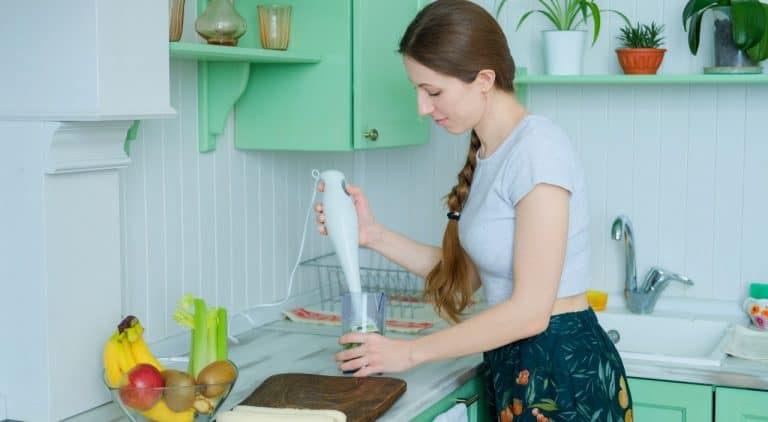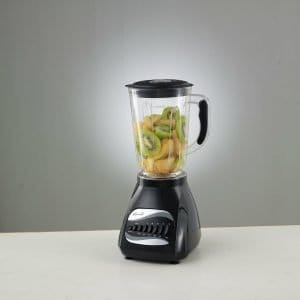Making good homemade baby food from natural and pure ingredients is very important, especially if you are just starting your baby on solid foods.
Solid foods can be tough on the fragile gums of your baby.
By using a blender for your baby’s food, it can be made into a sort of semi-solid paste which will be much easier for your baby to consume.
By using a blender you can get your baby off those expensive baby formulas.
However, you will need to look out for recipes to use so that your baby is properly nourished.
There are so many types and models of baby food makers in the market and it is difficult to choose from, especially when most parents don’t know much about making baby foods.
If you are looking for a quick and complete guide on the best baby food blenders, you have come to the right place.
We will brief you on the various types of Blenders available on the market along with their specifications and suggested way of using them.
This is ideal for new mothers who want to make sure that they give their babies the best food.
There are basically 2 types of baby food makers which are commonly used.
It is important that you understand the difference so you can see which works best for you.
Hey! By the way… any links on this page that lead to products on Amazon are affiliate links and I earn a commission if you make a purchase.
Thanks in advance – I really appreciate it!
Table of Contents
1.All in one Food Processor
These baby food makers take care of the chopping, crushing, cooking, and blending of the baby’s food in a single stage.
You just put the ingredients in the food processor and let it do everything once you have set it properly.
No need to transfer the cooked food from one bowl to another.
You can learn about the best baby food makers here.
Some models have a steamer and blender for baby food.
Some even come with storage cups and some even have a bottle warmer.
You can clean most of these in a dishwasher as the parts are dishwasher safe.
2. Blenders
This will only blend and convert the cooked food/ raw fruits into a smooth puree or a liquid, which will easily go down without any irritation to your baby.
It is a simpler gadget as compared to the food processor and has fewer parts to clean.
There are no hidden areas where bacteria can grow.
Further, you are not cooking in any plastic container when you use a blender, which prevents BPA from contaminating your baby’s food.
A good blender should have the following features
- It should be able to make good and consistent purees which are smooth, with various ingredients like apples, plums, beef, chicken, sweet potatoes, and other fruits and vegetables. However, make sure you follow the manufacturer’s guidelines and cut the ingredient into smaller pieces and use enough liquids/water to blend the items properly.
- The gadget should be easy to use – easy to set up and easy to clean
- Safety features which include no sharp blades to cut you, no hidden spaces where bacteria can grow.
While choosing the blender for your baby food, you must look into the following considerations as well.
Blender Size
Get one which will fit into your kitchen comfortably. There should be enough counter space available to accommodate the one you buy comfortably.
Check the dimensions of the blender before you buy.
Portability
In case you need to travel a lot with your baby, you should go for the hand operated models.
However they do not grind the food finely and you need to start with smaller pieces of food
Blender processor
If you are chopping up raw foods, then you would need a larger processor.
If you are using cooked food then a smaller processor capacity blender can be used to get the desired results
Advanced processing features
If you are looking to make your life simpler, you should go in for the Baby food processors, which although more expensive, allow you to process things the way you like them.
Especially if you are in the breast feeding stage, as you can also process the breast milk as well
Types of Blenders
There are a few different types of blenders which can be used in various applications
Immersion Blender

It is a hand-held device which blends and grinds, consisting of rotating blades which cut and blend at the end of a shaft. It is also called “stick blender”, “hand blender”, hand-held mixer”
There is no designated container of jar into which you have to put in your ingredients.
You can immerse it in any container where you prepare food – a glass, a bowl or even a pot which is being cooked on your stove.
It can chop, grind, blend, puree and emulsify the food.
It saves you the effort of transferring your hot ingredients into a blender bowl and simplifies your cooking process.
You can get it in corded or cordless ( battery-operated ) models.
The cordless ones are easy to use but are heavier due to the batteries
The home models have an immersible shaft of around 6 inches.
Standard Immersion blender
- Simple construction using low cost materials
- Upto 2 speeds available
- Good for simple blending tasks
- Generally come with a mixing beaker
Stick Blenders with multiple attachments
These upgraded blenders have the following features
- Attachements like beaker, blending jar, food chopper
- Stronger motors for heavy duty work
- Variable speeds for various different applications – they also have Turbo speed button
- Made from high quality material in a compact design
Commercial heavy-duty blenders
These come with larger and longer shafts are available for professional chefs and Restaurants.
They have the following features
- Shafts from 12” to 21”
- High power motor
- Variable speed controls
- An extra handle for proper control
- High quality material
Countertop Blenders

These are largest and most commonly used blenders available in the market.
They are also called Jug or Jar blenders because of the container which is used for blending.
They are heavy gadgets which are placed on the counter and in one position.
They have powerful motors which can blend soft and hard ingredients as per your exact needs.
You can use them to blend small to large amounts of ingredients and are multi-purpose.
They have a motor base with controls and a jar is fitted on the top of this.
They are very easy to use because they have various settings to help you get the ideal end product.
Some models come with pre-programmed settings to make your job even more effortless.
Even a beginner can make an excellent smoothie with the press of a button.
Blenders for your house can be classified into 2 categories
1. Small Personal Blenders or Portable Blenders
They are small in size compared to Countertop blenders and are perfect for travelling and moving around. You can fix a great smoothie fast.
These come with cup and lid from which you can drink.
2. Blenders for Smoothies
They are used for making smoothies and crushing ice.
Although you can make smoothies with other blenders, this one makes them really smooth
These are normal blenders which can blend smoothies, frozen drinks, milkshakes and other blending of your food.
They offer larger blending capacities but the price is on the higher side
Conclusion
As you can see there are various types of blenders and before you buy one, it is important to understand the following points to make the process easy
- What do you want to use the blender for?
- How much can you spend?
- How much space you have in the kitchen for the blender
- What is the frequency of usage.
Avoid going for cheap models and they have low power and also will not be able to handle many ingredients.
Invest in a quality blender which has adequate power and should also last for a long time.
Carrie Walters is a young mother of Nina and Tom, who along with her husband Jake is passionate about helping moms and families find modern solutions to common parenting and lifestyle questions. Together with a team of real moms and medical experts, this young couple share sound advice and proven tips to help make your life easier.
They manage this blog along with other blogs and Youtube channels on similar topics


